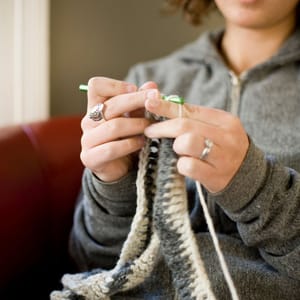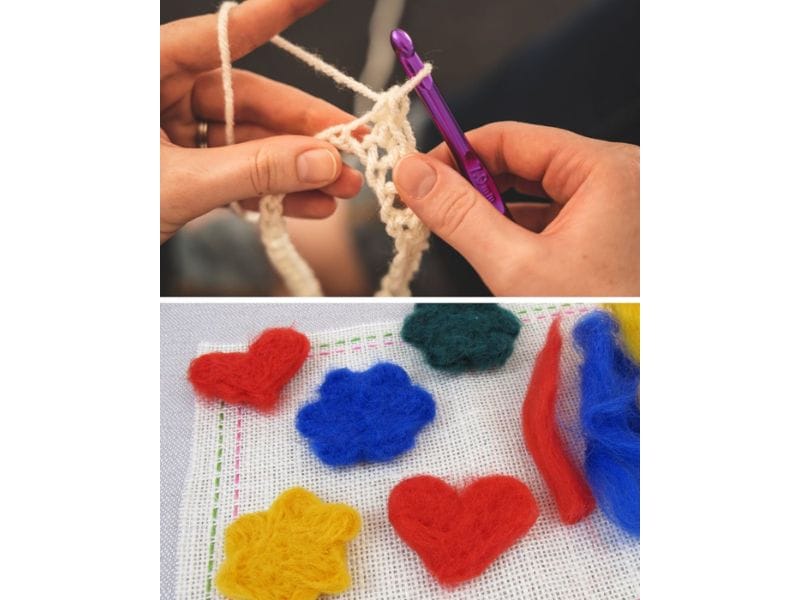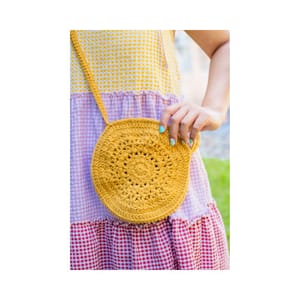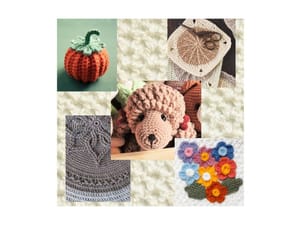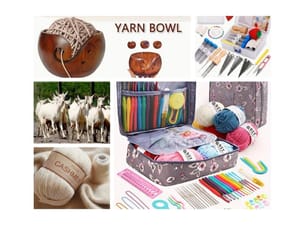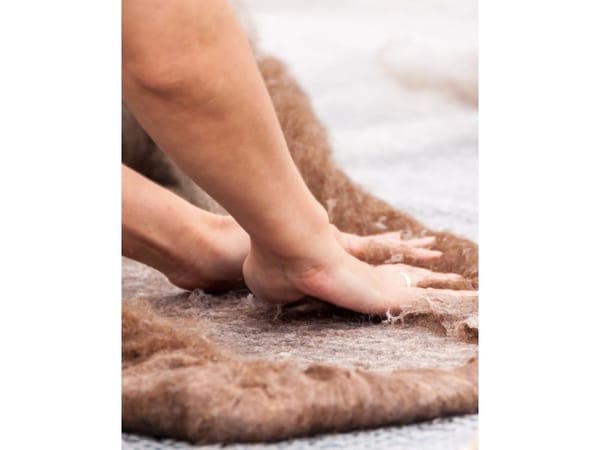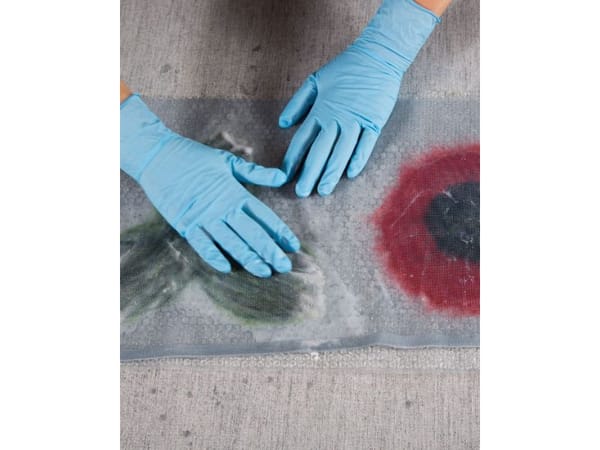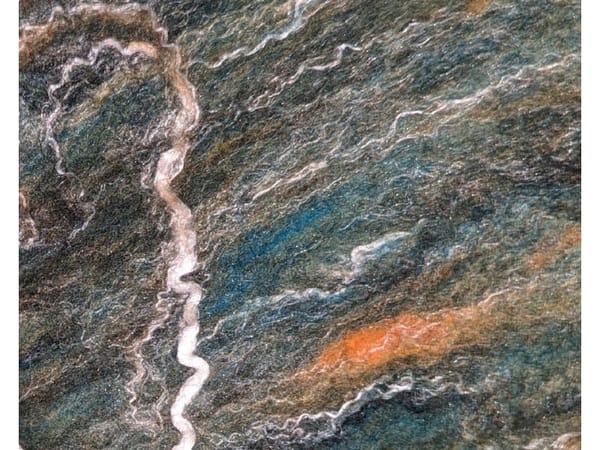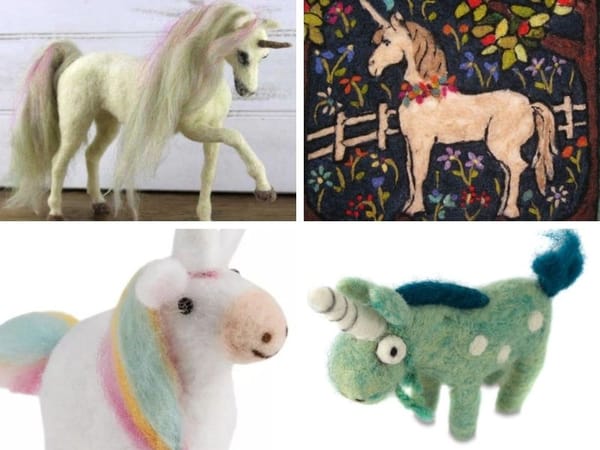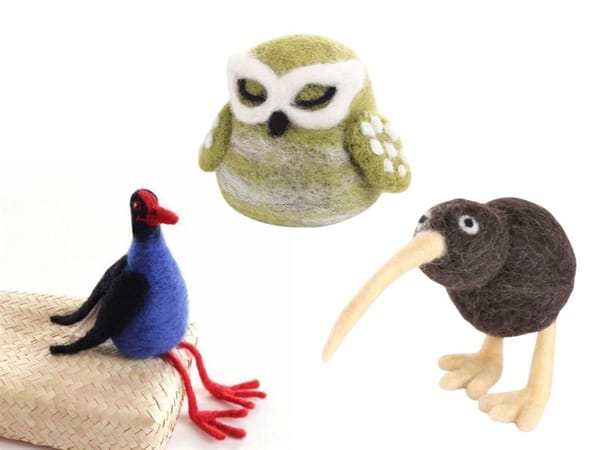Crafting is a delightful way to spend time, creating something beautiful and functional from mere materials.
Among the myriads of crafting options, needle felting and crocheting stand out as popular choices.
However, beginners often ponder: is needle felting easier than a crochet project?
This article dives deep into the tools, techniques, and learning curves of both crafts to offer a clearer perspective.
Key Takeaways:
- Understanding the basic techniques and tools required for both needle felting and crochet.
- Comparing the learning curves associated with starting each craft.
- Evaluating the versatility and project scope of needle felting versus crocheting.

The Basics of Needle Felting and Crocheting
Needle felting involves using a felting needle to interlock wool fibers to create a dense fabric.
The key instrument here is the felting needle, which has barbs that catch the fibers as the needle is stabbed into the wool. This process does not require complex tools or setups - often just the needles, wool, and a foam pad to work on.
On the other hand, crochet uses a crochet hook to interlock loops of yarn, creating a fabric. Different types of yarn can be used in crochet and needle felting, but it's important to note that acrylic yarn is not suitable for felting because its fibers do not bind together.
The process can be used to make everything from clothes to decorative items like amigurumi (crocheted stuffed toys). Unlike needle felting, crochet requires learning various stitches and techniques to create different patterns.

Learning Curve and Techniques
When it comes to learning each craft, needle felting might seem simpler at the beginning.
The basic technique of stabbing wool with a needle is straightforward and can be picked up quickly. Beginners can start creating simple shapes like balls or flat felted pieces in their first sitting. For a first felting project, it is advisable to start with small and simple shapes like a ball, cone, and rod, to get a feel for the process before moving on to larger items.
Crocheting, however, involves a steeper learning curve.
Beginners must learn several types of stitches, such as the chain stitch, single crochet, double crochet, etc., which are the foundation of all crocheting projects. Each stitch requires the crafter to master yarn tension and hook placement, which can initially be challenging.

First Felting Project Scope and Versatility
Needle felting offers a unique advantage in creating three-dimensional sculptures and intricate flat pieces without the need for seams or joining pieces.
This allows for a high degree of customization in projects like creating figures, animals, or abstract art pieces.
Crochet excels in creating wearable items and larger home decor pieces. Felting can be applied to crochet projects to add texture and durability, making items like bags and hats more robust and visually interesting.
With skills in different stitches, one can crochet anything from a delicate shawl to a cozy blanket. The ability to follow patterns allows for replicating designs and sharing ideas within the crafting community.

The Art of Personalization in Needle Felting
Needle felting offers a unique canvas for personal expression, unlike the more structured approach of crochet.
When you dive into needle felting, you're not just following a standard pattern; you're given the freedom to sculpt and shape your creations as you see fit. It is important to consider the size and complexity of a felting project when planning your work.
This flexibility allows you to experiment with different fibers, integrating elements like wool or cotton, to bring your imaginative designs to life.
Whether it's crafting a whimsical animal or a detailed landscape scene, needle felting lets your creative spirits soar without the confines of knitting needles or crochet hooks.
Moreover, the ability to create your own patterns in needle felting means that each piece can be as unique as a fingerprint.
Needle felting provides the perfect playground if you prefer to add a personal touch to your projects.
You can play with colors, textures, and shapes to manifest your artistic visions. For instance, adding a tiny hat to a felted character or experimenting with a multi-colored landscape can transform a simple project into a masterpiece.
This method fuels your creativity and enhances your skills as you learn to manipulate the fibers and needles to your will.
The Influence of Machine Felting Technology on Needle Felting
The advent of machine technology has revolutionized traditional crafts, and needle felting is no exception.
With the introduction of felting machines, enthusiasts can now tackle larger projects in half the time it traditionally takes. These machines mimic the actions of manual needle felting but at a pace that manual efforts can’t match.
Machine felting, for instance, involves using a top-load or front-load washer with specific settings for temperature and water, along with soap and a protective zippered laundry bag or pillowcase to prevent stretching and protect the machine from lint fibers. Adding items like old jeans or towels helps agitate the piece during the felting process, speeding up the felting significantly.
This innovation is particularly appealing for those looking to transition from hobbyists to small business owners, offering a way to increase production without sacrificing the artisanal quality that defines needle-felt art.
Moreover, the integration of machine technology in needle felting opens up a new avenue for artists to experiment with mixed media projects.
Combining machine efficiency with traditional hand-spun details, creators can develop unique, multi-textured pieces that stand out in the crowded craft market.
This blend of old and new methods draws in a broader audience and inspires other crafters to explore the potential of their own creative ideas.
The idea of machines working in harmony with handcraft techniques is not just a time-saver; it’s a game-changer in the crafting community.

Creative Expansion in Needle Felting: Beyond the Basics
Venturing beyond basic shapes and designs in needle felting can seem like a daunting task, but with the right approach, it’s a thrilling artistic journey.
For those ready to break the mold, consider incorporating elements from other crafts such as knitting or sewing. Imagine a needle-felted landscape with rivers made out of knit fabric or sewn-in floral details. This cross-pollination of techniques not only enriches the texture and depth of the artwork but also broadens the artist’s skill set and appeal. Traditional techniques of hand felting, such as using hot water, agitation, and shaping the fabric, can also be combined with these crafts to achieve unique effects.
Furthermore, for those who thrive on community and shared learning, joining a course or workshop can be incredibly beneficial.
These gatherings are a treasure trove of shared knowledge where seasoned practitioners reveal lesser-known tips and tricks, from choosing the right materials to mastering complex shapes. Whether it’s through formal education or casual meetups, expanding your practice through community engagement ensures a constant flow of inspiration and innovation, keeping the passion for needle felting alive and vibrant.
Experimentation and Learning Through Mistakes in Wet Felting
Embarking on the needle-felting journey is akin to setting sail in uncharted waters where each mistake is a beacon guiding your path.
Unlike crochet, where a mistake might mean unraveling hours of work, needle felting allows for on-the-fly corrections without significant setbacks. This aspect is particularly liberating for beginners, who can stab and shape the wool without the fear of ruining their project.
The felting process transforms wool into a dense cloth by bonding and shrinking the fibers together. It uses heat, agitation, and moisture to achieve this transformation, and includes three types: wet felting, needle felting, and commercial felting.
It’s about learning the nuances of fiber behavior - how it felts, how it holds shape, and how it blends with different colors.
Furthermore, needle felting encourages a trial-and-error approach, which is crucial in mastering any craft.
For example, creating a test swatch to see how different fibers react when washed or manipulated can save a lot of time and materials in future projects.
This hands-on experimentation leads to a deeper understanding of the craft and fosters an inventive mindset. Whether it’s reshaping a ball into a more complicated figure or fixing a lopsided part, needle felting allows you to adjust and evolve your project without starting over, making it a fun and forgiving way to develop as an artisan.
Materials and Accessibility: Acrylic Yarn
The materials for needle felting are relatively simple and inexpensive.
Basic wool roving, felting needles, and a foam pad are enough to get started. Wool roving comes in various colors, allowing for vibrant, textured creations without additional dying. However, superwash wool is not suitable for felting as it has been treated to prevent felting.
Crochet requires yarn, which comes in various weights, textures, and materials, and a set of crochet hooks. While yarn can be more expensive than wool roving, it is widely available and offers endless possibilities in terms of color and texture.

Time Investment and Patience
Needle felting can be both quick and satisfying.
Small projects can often be completed in a few hours, making it ideal for those who want to see quick progress. However, larger or more detailed works require patience and a steady hand, as the felting process can be time-consuming. Using hot water in the washing machine or a large tub can help agitate and mat the wool fibers together, facilitating the felting process.
Crochet can vary greatly in time commitment.
Small projects like hats or baby booties can be completed quickly, but larger projects like blankets or detailed amigurumi might take much longer. The time invested in crochet can be rewarding, as the finished projects are often functional and long-lasting.
Community and Resources
Both crafts boast vibrant communities, both online and offline.
Numerous online platforms, tutorials, and forums allow crafters to share tips, patterns, and inspiration. For those interested in felting wool, using a washing machine's wash cycle can be an effective method. Resetting or continuing the wash cycle for agitation helps achieve the desired level of felting.
Workshops and craft groups offer a space to learn and grow your skills, making it easier for beginners to get started and for experienced crafters to advance their skills.
Wrapping Up
Choosing between needle felting and crochet depends largely on personal preference and the type of projects one prefers.
Needle felting is simpler to start and great for sculptural projects, while crochet requires a bit more learning but offers versatility in creating both functional and decorative items.
Both provide immense satisfaction and a wonderful outlet for creativity.
After completing your felted items, it is important to rinse them thoroughly in cold water to lock in the felting and remove excess soap. This step ensures all the soap is washed away, and then you can press out the water before shaping and drying the felted piece.
Note: - I started with crocheting a beanie, and taking the many times I watched the YouTube video over and over again into consideration, my first beanie was competed in about 4 hours. Since then, I can complete a beanie in half the time - including do-over stitches. I'm still very much a beginner.
With needle felting, my first project was a beginner kit - a small llama with longer locks of hair (called curly locks roving). All together it took me an entire weekend (maybe longer) to finish it. Directly thereafter, every sculptural piece I made was horrible, until I started watching the experts and starting with the basics.

Q: What is the best craft for beginners?
A: Both needle felting and crocheting are accessible for beginners, but needle felting might be slightly easier to start with due to its simpler techniques.
Q: Can needle felting and crocheting be combined in projects?
A: Absolutely! Combining these two skills can bring unique textures and designs to projects. For example, a crocheted purse can be embellished with needle-felted flowers.
Q: How much does it cost to start needle felting or crocheting?
A: Initial costs are relatively low for both crafts. Basic needle felting kits can cost around $15-$30, while basic crocheting supplies can be similarly priced depending on the quality of yarn and hooks chosen.


Images Source: Canva

